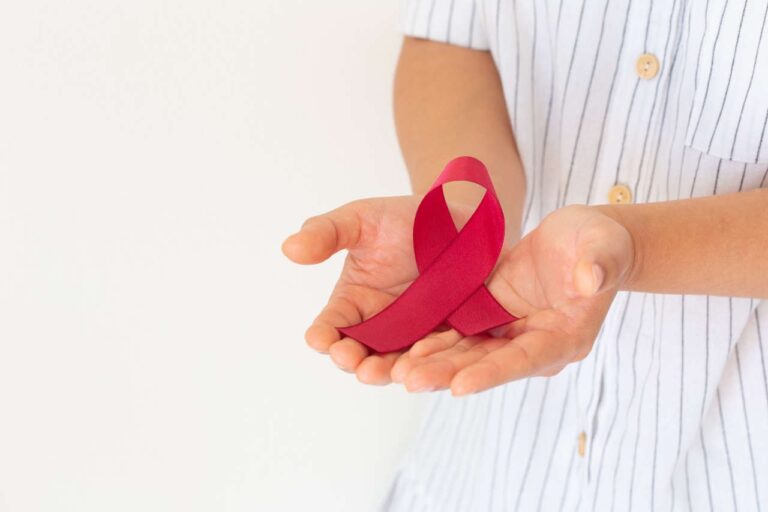
Cyclophosphamide is a chemotherapy medication currently available as a generic and as the trademarked brand names, Cytoxan and Neosar. This medication is available as oral tablets or capsules that must be swallowed whole and as injectable solutions that are administered intravenously. Cyclophosphamide is used to treat a variety of cancers, such as breast cancer and leukemia. Infusions are usually administered by trained healthcare professionals at doctors’ offices/clinics or in hospitals. It is possible to use this medication in combination with other medications, depending on the treatment regimen.
Cyclophosphamide Uses
Cancer-related uses:
- Ovarian cancer
- Breast cancer
- Leukemia
- Cutaneous T-cell lymphoma
- Hodgkin’s lymphoma and non-Hodgkin’s lymphoma
- Multiple myeloma
- Neuroblastoma
- Retinoblastoma
- Small-cell lung cancer (off-label)
- Rhabdomyosarcoma (off-label)
- Ewing’s sarcoma (off-label)
Other uses (off-label):
- Nephrotic syndrome
- Lupus nephritis
- Dermatomyositis/polymyositis
- Graft-vs-host disease prophylaxis
- Hematopoietic stem cell or marrow transplant
- Autoimmune hemolytic anemia
- Polyarteritis nodosa
- Interstitial pneumonia
The dosing and the preferred route of administration with cyclophosphamide vary depending on the diagnosis. When indicated, be sure to discuss the plan of treatment in detail with the prescriber. Compliance with treatment is crucial with this medication.
How It Works
Cyclophosphamide belongs to a class of drugs known as alkylating agents. It treats cancer by disrupting DNA synthesis during cell division, which halts the process. This leads to the inhibition of growth of many types of cancer cells.
Cyclophosphamide is not selective to cancer cells. Therefore, its effect may impact some of the body’s healthy cells as well, especially those involved in the immune system. As a result, it has a profound immunosuppressive activity that may be used for autoimmune disorders.
Cyclophosphamide Side Effects
Common side effects include nausea, vomiting, blurred vision, dizziness, and loss of appetite. Because cyclophosphamide can impair vision and mental acuity, avoid driving or using heavy machinery while under its effects.
Listed below are some of the other possible side effects that are associated with cyclophosphamide:
- Infections
- Changes in the color of the nails
- Changes in the color of skin
- Skin rash
- Hair loss
- Mouth sores
- Diarrhea
- Stomach pain
- Body aches
In most cases, if the side effects are minor, they may go away within a few days or weeks as the body adjusts to the medication. If they linger or become more severe, contact your doctor or pharmacist for further direction.
Serious Side Effects
Some side effects are serious/severe and need immediate medical attention. These include:
- Infections (see “Warnings” below)
- Hemorrhagic cystitis/kidney toxicity (see “Warnings” below):
- Bladder pain
- Blood in the urine
- Heart problems:
- Irregular heart rate or rhythm
- Chest pain
- Shortness of breath
- Lung problems: Shortness of breath
- Liver disease:
- Upper abdominal pain
- Dark-colored urine
- Pale or clay-colored stool
- Yellowing of the skin or the whites of the eye
- Delayed wound healing
- Infertility (see “Warnings” below)
- Syndrome of inappropriate antidiuretic hormone (SIADH), which is a condition in which your body retains too much water. Symptoms may include the following:
- Coma
- Seizures
- Hallucinations
- Confusion
- Muscle weakness
- Nausea and vomiting
- Muscle cramps
- Loss of appetite
- Irritability and restlessness
Note: Our goal is to provide you with the most up-to-date and accurate information we can find. However, due to the fact that each individual is unique, we cannot guarantee that this information contains all of the potential side effects. Always seek professional medical advice for confirmation.
Warnings
Infertility and Birth Defects Warning
Cyclophosphamide may cause irreversible infertility in both men and women. It has been shown to directly interfere with the development of both egg and sperm cells. In the event of a successful pregnancy, cyclophosphamide is also known to cause direct fetal harm, including congenital disabilities, miscarriages, and developmental delays. Therefore, women with childbearing potential should take appropriate measures to avoid pregnancy during treatment and up to 1 year after stopping the drug. If its use is unavoidable during pregnancy, all of its potential risks and benefits should be carefully considered by the prescriber.
Cyclophosphamide is known to be present in breast milk as well. Therefore, nursing mothers should avoid breastfeeding if its use is indicated in such situations. An infant exposed to cyclophosphamide may be subjected to developmental delays or permanent mental and physical disabilities.
Blood in the Urine Warning
Cyclophosphamide and its metabolites are irritating to the kidneys and the bladder. Constant exposure may lead to a condition known as hemorrhagic cystitis, which is characterized by sharp, one-sided lower back pain, bladder pain, or blood in the urine. When one or more of these symptoms are suspected, contact your doctor right away.
The risk of developing hemorrhagic cystitis can be lowered by increasing fluid intake, generally up to 2 – 3 L per day for most people. You may also be prescribed a medication known as Mesna, which may be given up to 4 days following the cyclophosphamide dose. The first dose is usually given intravenously, and any doses following that may be given in pill form. Maintaining adequate fluid intake while taking Mesna is important in ensuring its full effect in neutralizing renal toxicity with cyclophosphamide.
Infections
Cyclophosphamide weakens the body’s natural immune system. As a result, patients taking this medication may be more prone to serious or even fatal infection. An individual with an active infection should avoid taking cyclophosphamide until it has been adequately treated. Notify your doctor right away if you experience any of the following signs:
- Body aches
- Chills
- Fever of 100.4°F (38°C) or higher
Allergy Warning
As with any substance, cyclophosphamide may cause a life-threatening allergic reaction in sensitive patients. Some of the potential signs and symptoms include:
- Shock
- Vomiting
- Lightheadedness
- Wheezing
- Swelling of the face or throat
- Hives
If any of these symptoms appear upon initiation of cyclophosphamide, stop taking it and seek immediate medical attention (call 911 or go to the nearest emergency room). Such sensitivity contraindicates its usage, and it should never be rechallenged.
Disease-specific Considerations
For Patients With Kidney Disease:
Cyclophosphamide may accumulate in patients with renal impairment. Therefore, it is important to have your kidney function checked before starting this medication and on a regular basis during treatment. Depending on the severity, your doctor may need to adjust the dose in order to prevent the development of toxicities.
For Patients With Liver Disease:
The liver is responsible for activating and metabolizing cyclophosphamide. Therefore, the presence of liver disease may both reduce the efficacy of this medication and increase the risk of its toxicities. For mild to moderate liver impairment, no dose adjustment is typically needed. However, in the presence of severe liver impairment, use may be contraindicated due to the risk of reduced efficacy.
Individuals With Urinary Outflow Obstruction:
Individuals with obstructive uropathy should avoid taking cyclophosphamide. Because this medication is primarily excreted through urine, the condition may decrease the body’s ability to get rid of the medication in the absence of kidney impairment.
Cyclophosphamide Drug Interactions
Cyclophosphamide may interact with many other medications, herbal supplements, and vitamins when taken concurrently. This may cause variability in the serum levels of all of the substances involved, leading to potential toxicities. Maintain an up-to-date list of all of your current medications. Before starting cyclophosphamide, or any medication, be sure to present the list to your doctor and pharmacist to assess for any concerns. Do not start, stop, or change the dosages of any medication without first consulting with your providers.
The following are some select substances that may interact with cyclophosphamide:
- Allopurinol: enhanced bone marrow suppression
- Amiodarone: increased potential for pulmonary toxicity
- Anthracyclines (i.e., doxorubicin, idarubicin): enhanced cardiotoxic effects
- Azathioprine: may increase risk of hepatotoxicity
- Biologics (abrocitinib, baricitinib, denosumab, etanercept, natalizumab, ocrelizumab, ofatumumab, ruxolitinib, tofacitinib, upadacitinib, etc.): enhanced immunosuppression
- Azole antifungals (i.e., itraconazole, ketoconazole): may enhance the toxic effects of cyclophosphamide
- Chlorpromazine: enhanced myelosuppression
- Cladribine: enhanced myelosuppression and immunosuppression
- Clozapine: increased risk of neutropenia
- Cyclosporine: decreased efficacy
- Deferiprone: increased risk of neutropenia
- Echinacea: may diminish the therapeutic effects of cyclophosphamide
- Fexinidazole: enhanced myelosuppression
- Filgrastim: increased risk of pulmonary toxicity
- Leflunomide: enhanced immunosuppression
- Protease inhibitors (i.e., ritonavir, darunavir, saquinavir, indinavir, lopinavir, atazanavir, etc.): may increase the risk of cyclophosphamide toxicity
- Succinylcholine: serum concentration of succinylcholine may be increased
- Tacrolimus: increased risk of infections
- Thiazide diuretics (i.e. hydrochlorothiazide, metolazone, indapamide, etc.): increased risk of granulocytopenia
- Vaccines (inactivated): decreased efficacy
- Vaccines (live): risk of vaccine-associated infection
- Vasopressin: risk of increased antidiuretic effects
Note: Please keep in mind that the above list is not comprehensive. Always check with your doctor or pharmacist for a complete assessment of your medication list.
How To Take Cyclophosphamide
Cyclophosphamide may be given intravenously (IV) or orally (PO). The dose and the route of administration can vary depending on the indication and situation. Any pre-existing medical condition may impact the treatment decision as well. Therefore, It is very important to openly discuss your entire medical history with your doctor prior to initiating this medication.
Regardless of dose or the route of administration, staying well hydrated is very important while taking cyclophosphamide. As previously mentioned, hemorrhagic cystitis is one of the most serious adverse effects of this medication. Drinking plenty of water, usually around 2 – 3 L per day, helps the kidneys excrete the drug and its metabolites, which may significantly reduce this risk.
When taking cyclophosphamide capsules or tablets, swallow them whole. Opening the capsules or crushing the tablets in any way may not only alter their absorption when administered but also expose the medication to an unintended person. Be sure to wash hands and clean any surface that the medication may have come in contact with to limit accidental exposures.
Take cyclophosphamide exactly as prescribed. Any alterations without consulting a clinician may increase the risk of experiencing serious side effects as well as treatment failures.
Missed Doses
For cyclophosphamide injections, contact the prescriber right away. The correction plan may differ from patient to patient.
For all oral cyclophosphamide products (capsules and tablets), take the missed dose as soon as remembered. However, if the following dose is due within 8 hours, skip the missed dose, and resume the regular schedule. Do not take two doses at the same time or any extra doses.
Treatment Monitoring
Blood tests, urinalyses, and various scans (see below) will be performed regularly to monitor for effectiveness and for any toxicities that may arise from the use of this medication:
- Urine tests
- Red and white blood cell counts (CBC test)
- Liver function test
- Kidney function test
REFERENCES:
- Ogino MH, Tadi P. Cyclophosphamide. [Updated 2021 Sep 29]. In: StatPearls [Internet]. Treasure Island (FL): StatPearls Publishing; 2021 Jan-. Available from: https://www.ncbi.nlm.nih.gov/books/NBK553087/
- Mills KA, Chess-Williams R, McDermott C. Novel insights into the mechanism of cyclophosphamide-induced bladder toxicity: chloroacetaldehyde’s contribution to urothelial dysfunction in vitro. Arch Toxicol. 2019 Nov;93(11):3291-3303. doi: 10.1007/s00204-019-02589-1. Epub 2019 Oct 9. PMID: 31598736.
- Korkmaz A, Topal T, Oter S. Pathophysiological aspects of cyclophosphamide and ifosfamide induced hemorrhagic cystitis; implication of reactive oxygen and nitrogen species as well as PARP activation. Cell Biol Toxicol. 2007 Sep;23(5):303-12. doi: 10.1007/s10565-006-0078-0. Epub 2007 Jan 15. PMID: 17225077.
- Dan D, Fischer R, Adler S, Förger F, Villiger PM. Cyclophosphamide: As bad as its reputation? Long-term single centre experience of cyclophosphamide side effects in the treatment of systemic autoimmune diseases. Swiss Med Wkly. 2014 Oct 23;144:w14030. doi: 10.4414/smw.2014.14030. PMID: 25341028.
- Cavallasca JA, Costa CA, Maliandi Mdel R, Contini LE, Fernandez de Carrera E, Musuruana JL. Severe infections in patients with autoimmune diseases treated with cyclophosphamide. Reumatol Clin. 2015 Jul-Aug;11(4):221-3. English, Spanish. doi: 10.1016/j.reuma.2014.09.003. Epub 2014 Nov 11. PMID: 25455720.
- Fraiser LH, Kanekal S, Kehrer JP. Cyclophosphamide toxicity. Characterising and avoiding the problem. Drugs. 1991 Nov;42(5):781-95. doi: 10.2165/00003495-199142050-00005. PMID: 1723374.
- IARC Working Group on the Evaluation of Carcinogenic Risks to Humans. Pharmaceuticals. Lyon (FR): International Agency for Research on Cancer; 2012. (IARC Monographs on the Evaluation of Carcinogenic Risks to Humans, No. 100A.) CYCLOPHOSPHAMIDE. Available from: https://www.ncbi.nlm.nih.gov/books/NBK304336/
- Martin F, Lauwerys B, Lefèbvre C, Devogelaer JP, Houssiau FA. Side-effects of intravenous cyclophosphamide pulse therapy. Lupus. 1997;6(3):254-7. doi: 10.1177/096120339700600307. PMID: 9104732.
- Fraiser LH, Kanekal S, Kehrer JP. Cyclophosphamide toxicity. Characterising and avoiding the problem. Drugs. 1991 Nov;42(5):781-95. doi: 10.2165/00003495-199142050-00005. PMID: 1723374.
- Ahmed AR, Hombal SM. Cyclophosphamide (Cytoxan). A review on relevant pharmacology and clinical uses. J Am Acad Dermatol. 1984 Dec;11(6):1115-26. doi: 10.1016/s0190-9622(84)80193-0. PMID: 6392368.
- Chatelanat O, Van Delden C, Adler D, Guerne PA, Nendaz M, Serratrice J. Facteurs de risque et prophylaxie de la pneumonie à Pneumocystis jirovecii chez les patients non VIH [Risk factors and prophylaxis of Pneumocystis jirovecii pneumonia in HIV-negative patients]. Rev Med Suisse. 2018 Oct 17;14(623):1829-1833. French. PMID: 30329227.
- Nishimura M, Onoe T, Sakai H, Arase M, Watanabe S, Soyama M, Hashimoto K, Miki M, Tane K, Hirokaga K, Takao S, Matsumoto K. Safety and Relative Dose Intensity of Dose-dense Doxorubicin and Cyclophosphamide Followed by Dose-dense Paclitaxel. Anticancer Res. 2019 Aug;39(8):4379-4383. doi: 10.21873/anticanres.13607. PMID: 31366533.
- Hiddemann W, Kneba M, Dreyling M, Schmitz N, Lengfelder E, Schmits R, Reiser M, Metzner B, Harder H, Hegewisch-Becker S, Fischer T, Kropff M, Reis HE, Freund M, Wörmann B, Fuchs R, Planker M, Schimke J, Eimermacher H, Trümper L, Aldaoud A, Parwaresch R, Unterhalt M. Frontline therapy with rituximab added to the combination of cyclophosphamide, doxorubicin, vincristine, and prednisone (CHOP) significantly improves the outcome for patients with advanced-stage follicular lymphoma compared with therapy with CHOP alone: results of a prospective randomized study of the German Low-Grade Lymphoma Study Group. Blood. 2005 Dec 1;106(12):3725-32. doi: 10.1182/blood-2005-01-0016. Epub 2005 Aug 25. PMID: 16123223.
- Popescu NA, Sheehan MG, Kouides PA, Loughner JE, Condemi JJ, Looney RJ, Leddy JP. Allergic reactions to cyclophosphamide: delayed clinical expression associated with positive immediate skin tests to drug metabolites in five patients. J Allergy Clin Immunol. 1996 Jan;97(1 Pt 1):26-33. doi: 10.1016/s0091-6749(96)70279-8. PMID: 8568134.
- “Cytoxan.” Chemocare. Accessed December 2021. https://chemocare.com/chemotherapy/drug-info/cytoxan.aspx.











